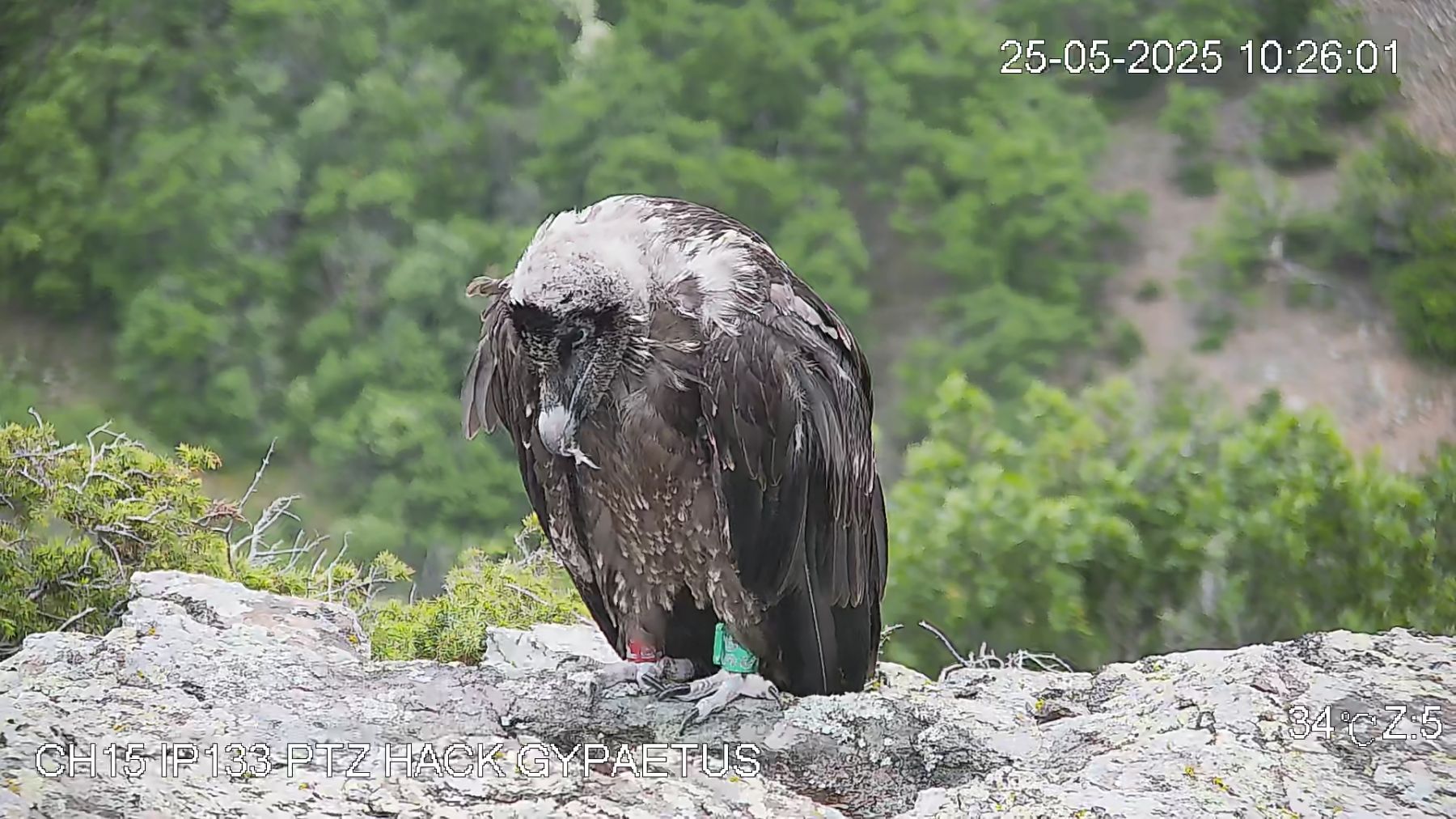
During the next two weeks several young bearded vultures will be released in the reintroduction projects in the Alps, Grands Causses (France) and Andalucia (Spain), to reinforce the populations there. All of these birds originate in the bearded vulture captive breeding network, managed by the VCF on behalf of EAZA.
Unfortunately this season the breeding was below our expectations, so planned releases in one site (Vercors, western Alps) had to be cancelled
Throughout this winter´s breeding season the 34 bearded vulture pairs included in the EEP (European Endangered Species Programme) laid a total of 52 eggs, from which 17 chicks hatched. Four of those died, from a variety of causes – inexperienced or aggressive breeding adults, and predation. This chick was taken by a beech marten (Martes foina) from under its mother´s chest in the Guadalentin specialized breeding center, and the whole scene was recorded through the video monitoring. Subsequently, some recommendations were issued to all EEP network partners to take appropriate measures to prevent similar accidents in the future.
This year, the breeding season at the zoos was relatively good – 8 of the surviving chicks come from Zoo partners. However, the breeding results at the specialized breeding centers have been very bad, with unusual high number of putrefied and aborted eggs observed there. One possible explanation could be the mild and wet winter. In the specialized breeding center in Vallcalet, the three hatched chicks needed special assistance, as they were born with oedema and low vitality, and had to be force fed during the first few days.
Of the 13 chicks that survived this tear, four (3 males and 1 female) will be incorporated into the captive breeding network, mostly to balance the big female surplus in the captive population. Nine chicks will now be released over the next few weeks in the Grands Causses (Cévénnes, France), National Park Hohe Tauern (Austria), Calfeisental (Switzerland) and Cazorla (Andalucia, Spain).



